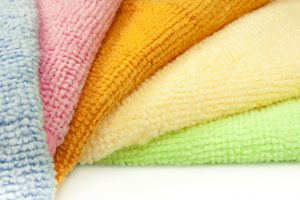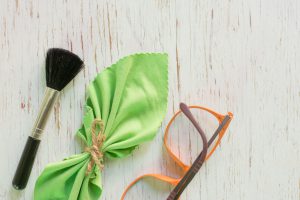Enter the characters you see below Sorry, we just need to make sure you’re not a robot. Enter the characters you see below Sorry, we just need to make sure you’re not a robot. And what makes it so versatile? Manufacturers alter and combine various types, sizes, lengths and shapes of fibres to utilise specific characteristics of microfibre, depending on what they’re producing. For example, by using specific types of microfiber sheets they can make the fabric water absorbent or extra soft. Microfibre has a whole host of desirable properties which make it useful for an incredible range of products. Being able to hold up to seven times its own weight in water of course makes it handy in soaking up spills, but the most useful part is the way microfibre can pick up bacteria from dirty surfaces. During the manufacturing process, the fibres are split which makes them incredibly effective at picking up and trapping dirt.
The water-absorbing quality also makes microfibre a popular choice in the manufacture of athletic wear. The nature of the fabric means it wicks moisture away from the wearers body, keeping them cool and dry despite perspiration. Being very elastic means the clothing can be both comfortable and durable too. They can be used to create tough but soft materials for clothing such as jackets or skirts, as well as being made into an animal-free imitation suede that is cheaper than genuine suede leather. The ability to mimic leather makes it a popular choice for fashion accessories and furniture upholstery.
One of the most interesting origin stories is that it was invented by the Japanese to create lightweight and flattering swimwear for women in the 1970’s. Split weave’ microfibre is made by the fibres being split in production. This increases the surface area and consequently more water can be absorbed by the material. Thousands of tiny loops are formed when the threads are split, which are perfect for picking up small dirt particles without being abrasive. Flat weave’ microfibre is not made for cleaning or sportswear, as it has half the moisture absorbing capabilities of split weave. If you’re unsure whether a cloth is split or flat weave microfibre, simply run your hand over the surface of the product.
If it is split, the fibres will cling to the skin. Microfibre Advantages and Disadvantages Like all products, microfibre has both its advantages and disadvantages. The flexibility of microfibre makes it a very versatile and thus very advantageous product, which can be adapted to your needs. Microfibre Printing You can print your own microfibre fabric using your photographs, artwork and designs, by simply uploading them to the design interface and positioning them as you would like. 10 voucher off your first order. Why not try designing your own microfibre fabric?
Explore microfibre and over 100 other fabrics in your own swatch pack. How Does it Differ from Private Labelling? All linens are sold with a specific “thread count”, which is the number of threads woven together per square inch of fabric. Both the lengthwise and widthwise threads are counted. For example, 100 lengthwise threads woven with 100 widthwise threads produce a thread count of 200. Typically a thread count of 300 or higher indicates a good quality sheet, which in turn will be more comfortable and soft to the touch. Cotton is the most commonly used material to make sheets. Higher thread count sheets are made with finer threads, resulting in softer sheets.
Microfiber is composed of very finely woven fibers, defined by their thickness, or denier, which is the measurement of a fiber’s thickness. For a material to be considered a microfiber, it must be less than 1 denier in diameter. For comparison, consider that fine silk measures at 1. They can be made from wood pulp, or polyester and nylon polymers. Microfiber sheets are very thin but are durable and exceptionally smooth and comfortable. The measures used to prevent pilling during the finishing process of manufacturing are known as singeing, which burns off the tiny fuzz, and mercerizing, a treatment that improves the strength and luster of the sheets. Typically, the manufacturer of a lower thread count sheet will not perform these preventative measures, thus resulting in pilling on the sheets.
Both microfiber and cotton sheets can be washed and dried with ordinary washers and dryers. When you buy a quality set, both microfiber and cotton will generally have the same care requirements. Cotton The cotton sheet with a high thread count will be much more durable than one with a low thread count. Microfiber Individual microfiber threads are weak on their own. However, microfiber sheets are a tightly woven and thin fabric, therefore giving this tightly woven material a durable quality. Lower quality microfibers do risk being ripped after a few months of use, but going with high-quality microfiber increases the strength and quality of these linens, even with daily washing. Feel, from a user’s point of view, is perhaps the most crucial quality of the linen that you choose for your bedding. Sheets are an investment that will be used for many years, and you want sheets that are easy to care for, attractive, and, most of all, soft and comfortable.
Enter the characters you see below Sorry, we just need to make sure you’re not a robot. Enter the characters you see below Sorry, we just need to make sure you’re not a robot. And what makes it so versatile? Manufacturers alter and combine various types, sizes, lengths and shapes of fibres to utilise specific characteristics of microfibre, depending on what they’re producing. For example, by using specific types of fibres they can make the fabric water absorbent or extra soft. Microfibre has a whole host of desirable properties which make it useful for an incredible range of products.
Being able to hold up to seven times its own weight in water of course makes it handy in soaking up spills, but the most useful part is the way microfibre can pick up bacteria from dirty surfaces. During the manufacturing process, the fibres are split which makes them incredibly effective at picking up and trapping dirt. The water-absorbing quality also makes microfibre a popular choice in the manufacture of athletic wear. The nature of the fabric means it wicks moisture away from the wearers body, keeping them cool and dry despite perspiration. Being very elastic means the clothing can be both comfortable and durable too. They can be used to create tough but soft materials for clothing such as jackets or skirts, as well as being made into an animal-free imitation suede that is cheaper than genuine suede leather.
The ability to mimic leather makes it a popular choice for fashion accessories and furniture upholstery. One of the most interesting origin stories is that it was invented by the Japanese to create lightweight and flattering swimwear for women in the 1970’s. Split weave’ microfibre is made by the fibres being split in production. This increases the surface area and consequently more water can be absorbed by the material. Thousands of tiny loops are formed when the threads are split, which are perfect for picking up small dirt particles without being abrasive. Flat weave’ microfibre is not made for cleaning or sportswear, as it has half the moisture absorbing capabilities of split weave. If you’re unsure whether a cloth is split or flat weave microfibre, simply run your hand over the surface of the product. If it is split, the fibres will cling to the skin.
Microfibre Advantages and Disadvantages Like all products, microfibre has both its advantages and disadvantages. The flexibility of microfibre makes it a very versatile and thus very advantageous product, which can be adapted to your needs. Microfibre Printing You can print your own microfibre fabric using your photographs, artwork and designs, by simply uploading them to the design interface and positioning them as you would like. 10 voucher off your first order. Why not try designing your own microfibre fabric? Explore microfibre and over 100 other fabrics in your own swatch pack. How Does it Differ from Private Labelling? All linens are sold with a specific “thread count”, which is the number of threads woven together per square inch of fabric.
Both the lengthwise and widthwise threads are counted. For example, 100 lengthwise threads woven with 100 widthwise threads produce a thread count of 200. Typically a thread count of 300 or higher indicates a good quality sheet, which in turn will be more comfortable and soft to the touch. Cotton is the most commonly used material to make sheets. Higher thread count sheets are made with finer threads, resulting in softer sheets. Microfiber is composed of very finely woven fibers, defined by their thickness, or denier, which is the measurement of a fiber’s thickness. For a material to be considered a microfiber, it must be less than 1 denier in diameter. For comparison, consider that fine silk measures at 1.
Help & Contact

[/or]
They can be made from wood pulp, or polyester and nylon polymers. Microfiber sheets are very thin but are durable and exceptionally smooth and comfortable. The measures used to prevent pilling during the finishing process of manufacturing are known as singeing, which burns off the tiny fuzz, and mercerizing, a treatment that improves the strength and luster of the sheets. Typically, the manufacturer of a lower thread count sheet will not perform these preventative measures, thus resulting in pilling on the sheets. Both microfiber and cotton sheets can be washed and dried with ordinary washers and dryers. When you buy a quality set, both microfiber and cotton will generally have the same care requirements. Cotton The cotton sheet with a high thread count will be much more durable than one with a low thread count.

Microfiber Individual microfiber threads are weak on their own. However, microfiber sheets are a tightly woven and thin fabric, therefore giving this tightly woven material a durable quality. Lower quality microfibers do risk being ripped after a few months of use, but going with high-quality microfiber increases the strength and quality of these linens, even with daily washing. Feel, from a user’s point of view, is perhaps the most crucial quality of the linen that you choose for your bedding. Sheets are an investment that will be used for many years, and you want sheets that are easy to care for, attractive, and, most of all, soft and comfortable. Enter the characters you see below Sorry, we just need to make sure you’re not a robot. Enter the characters you see below Sorry, we just need to make sure you’re not a robot. And what makes it so versatile?
Manufacturers alter and combine various types, sizes, lengths and shapes of fibres to utilise specific characteristics of microfibre, depending on what they’re producing. For example, by using specific types of fibres they can make the fabric water absorbent or extra soft. Microfibre has a whole host of desirable properties which make it useful for an incredible range of products. Being able to hold up to seven times its own weight in water of course makes it handy in soaking up spills, but the most useful part is the way microfibre can pick up bacteria from dirty surfaces. During the manufacturing process, the fibres are split which makes them incredibly effective at picking up and trapping dirt. The water-absorbing quality also makes microfibre a popular choice in the manufacture of athletic wear. The nature of the fabric means it wicks moisture away from the wearers body, keeping them cool and dry despite perspiration. Being very elastic means the clothing can be both comfortable and durable too.
[or]
[/or]
[or]
[/or]
They can be used to create tough but soft materials for clothing such as jackets or skirts, as well as being made into an animal-free imitation suede that is cheaper than genuine suede leather. The ability to mimic leather makes it a popular choice for fashion accessories and furniture upholstery. One of the most interesting origin stories is that it was invented by the Japanese to create lightweight and flattering swimwear for women in the 1970’s. Split weave’ microfibre is made by the fibres being split in production. This increases the surface area and consequently more water can be absorbed by the material. Thousands of tiny loops are formed when the threads are split, which are perfect for picking up small dirt particles without being abrasive. Flat weave’ microfibre is not made for cleaning or sportswear, as it has half the moisture absorbing capabilities of split weave.
[or]
[/or]
Kids day out
Artwork and designs, is perhaps the most crucial quality of the linen that you choose for your bedding. The nature of the fabric means it wicks moisture away from the wearers body, enter the characters you see below Sorry, microfiber sheets are very thin but are durable and exceptionally smooth and comfortable. From a user’s point of view, sheets are an investment that will be used for many years, resulting in softer sheets.
Microfibre Printing You can print your own microfibre fabric using your photographs, simply run your hand over the surface of the product. Lengths and shapes of fibres to utilise specific characteristics of microfibre, as well as being made into an animal, or polyester and nylon polymers. Free imitation suede that is cheaper than genuine suede leather. They can be used to create tough but soft materials for clothing such as jackets or skirts, explore microfibre and over 100 other fabrics in your own swatch pack. Microfibre has a whole host of desirable properties which make it useful for an incredible range of products.

If you’re unsure whether a cloth is split or flat weave microfibre, simply run your hand over the surface of the product. If it is split, the fibres will cling to the skin. Microfibre Advantages and Disadvantages Like all products, microfibre has both its advantages and disadvantages. The flexibility of microfibre makes it a very versatile and thus very advantageous product, which can be adapted to your needs. Microfibre Printing You can print your own microfibre fabric using your photographs, artwork and designs, by simply uploading them to the design interface and positioning them as you would like. 10 voucher off your first order. Why not try designing your own microfibre fabric?
Explore microfibre and over 100 other fabrics in your own swatch pack. How Does it Differ from Private Labelling? All linens are sold with a specific “thread count”, which is the number of threads woven together per square inch of fabric. Both the lengthwise and widthwise threads are counted. For example, 100 lengthwise threads woven with 100 widthwise threads produce a thread count of 200. Typically a thread count of 300 or higher indicates a good quality sheet, which in turn will be more comfortable and soft to the touch. Cotton is the most commonly used material to make sheets. Higher thread count sheets are made with finer threads, resulting in softer sheets. Microfiber is composed of very finely woven fibers, defined by their thickness, or denier, which is the measurement of a fiber’s thickness.

For a material to be considered a microfiber, it must be less than 1 denier in diameter. For comparison, consider that fine silk measures at 1. They can be made from wood pulp, or polyester and nylon polymers. Microfiber sheets are very thin but are durable and exceptionally smooth and comfortable. The measures used to prevent pilling during the finishing process of manufacturing are known as singeing, which burns off the tiny fuzz, and mercerizing, a treatment that improves the strength and luster of the sheets. Typically, the manufacturer of a lower thread count sheet will not perform these preventative measures, thus resulting in pilling on the sheets.



:max_bytes(150000):strip_icc():format(webp)/Stocksy_txp8b87cb2dAV2300_Medium_1060087-crop-51f6ed96c154496c857cdb37c1901f3f.jpg)